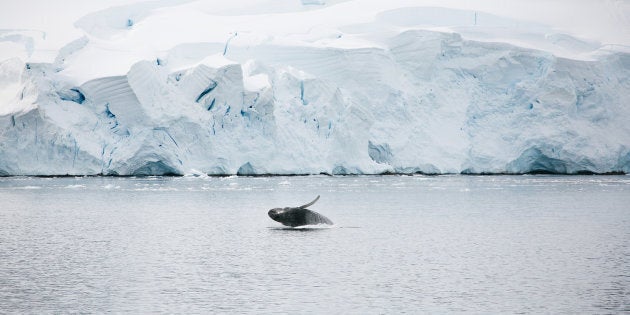
With no Indigenous population to describe it, our perception of Antarctica is rife with curious imagination. In books from Ernest Shackleton and Frank Wild, the continent is described as violent and stormy and beautiful in its flora and fauna.
During my visits to Antarctica -- twice aboard an anti-whaling vessel and once as a researcher -- I was struck by the effortless beauty of the icy jungle. From the mountainous points of the west to the spouting fin whales and leaping orcas in the east, Antarctica remains the single-most resonate landscape I've encountered along my journey in conservation biology.
I travelled there as an eager 24-year-old researcher and environmentalist hoping to leave my mark on the last discovered continent. In a picturesque place where snow falls year-round and leopard seals bathe on the pack ice in summer, there is a backdrop of albatross and endangered blue whales. But amongst the white serenity lurks a secret whaling fleet, ship waste, illegal fishing and the very real effects of a rapidly warming planet.
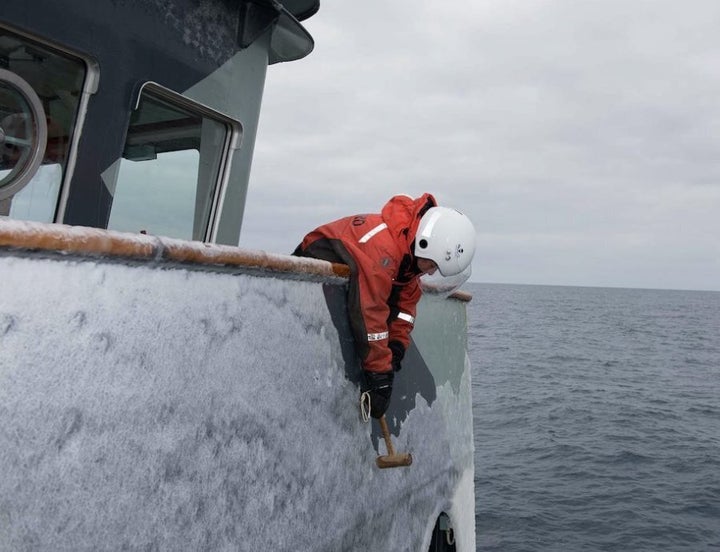
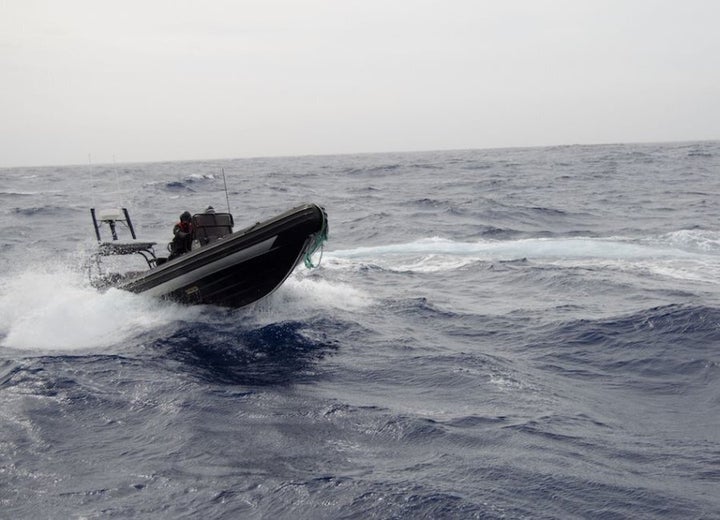
Antarctica is the Earth's southernmost continent and the world's fifth largest zone. It's a southern desert with temperatures that range well beyond below freezing, and is inhabited by only a few hundred people every year. The continent is governed by parties of the Antarctic Treaty (1959), a de facto condominium, prohibiting military activities, mining and the dumping of nuclear waste. During bridge patrols and on board the anti-whaling vessel, my temperature was governed only by three layers of Patagonia cold weather gear and the warmth of my tiny shared cabin.
At the base, surrounded by biodiversity, my exposed nose and cheeks stung in the cold.
But time and again, it was the lure of the stunning landscapes and fields of penguins that kept me outside, braving the cold, to experience the Antarctic views.
And in Antarctica, the views are spectacular.
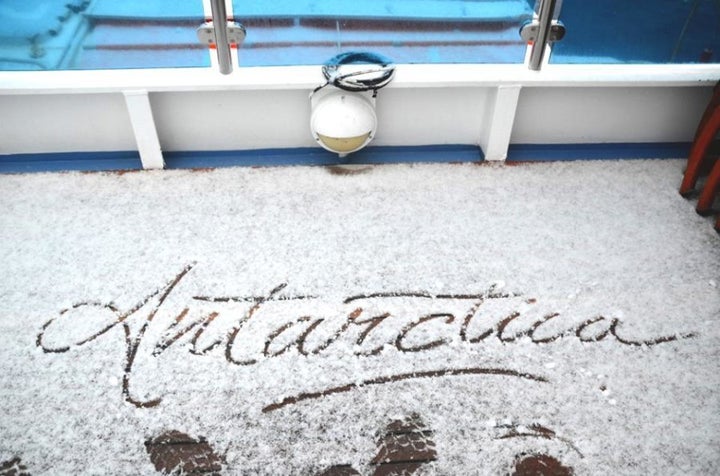

In the West, Lesser Antarctica's rocky uplift, formed by the metamorphism of sea bed sediments in the early Mesozoic, looks like the snow white cousin of the Andes in South America; the soaring steep rock mounds of the Transantarctic Mountains, covered by the thick West Antarctic Ice Sheet (WAIS), have formed over millions of years to separate Lesser Antarctica from the Western Hemisphere. Hiking there is not for the faint of heart and the polar expeditions take hours. In my first experience trekking over challenging terrain, I broke my snow shoes, lost my trekking pole and had to retreat, defeated and exhausted, to camp.
It's in the West, across the shrinking WAIS, that the first signs of climate change are seen. The west coasts are ice-free during the summer, clad only by mosses and lichens that have evolved to withstand the violent cold. They belong to the Marielandia Antarctic tundra, a biome, in which tree growth and expansive biodiversity is prevented by the incredibly low temperatures.
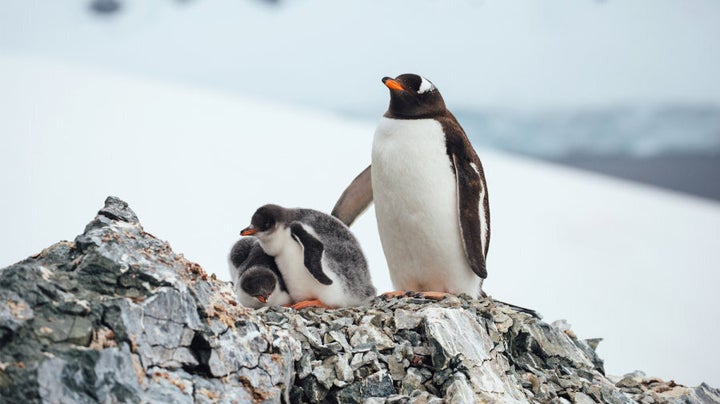
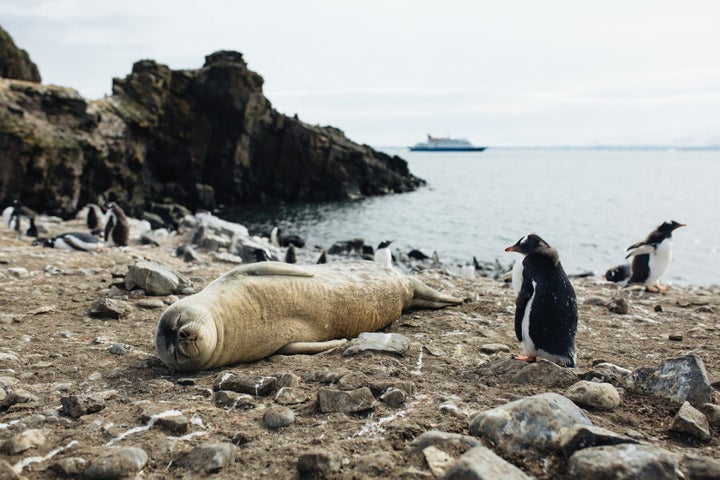
Greater Antarctica, sprawled across the eastern two thirds of the polar continent, is encased by the Indian Ocean and surrounds the lofty subglacial Gamburtsev Mountain Range. Unlike the west, East Antarctica is layered by thick ice throughout with only moss and algae to make up its terrestrial plant life. The east coast is a splendour for wildlife activity, where acrobatic leopard seals and squawking penguins travel to the rocky shores to breed and nest.
For a naturalist, the biodiversity is unlike any other.
The Antarctic coasts are home to soaring seabirds, noisy penguins and diving seals, including the emperor penguin, who famously breeds in the freezing and dark Antarctic winters. It was on my first expedition South that I fell in love with the black-browed albatross and gentle petrels who often took refuge from their exhausting hunts on the vessel wings. Southern fulmar, Cape petrel and the scavenging southern giant petrel also feed and breed along the coast, whilst the seals of the Antarctic Ocean, including the predatory leopard seal, the giant elephant seal and the curious Ross seal make up the visiting mammal life, bathing in the coastal shallows and open seas where they are hunted by the fierce and transient orca.
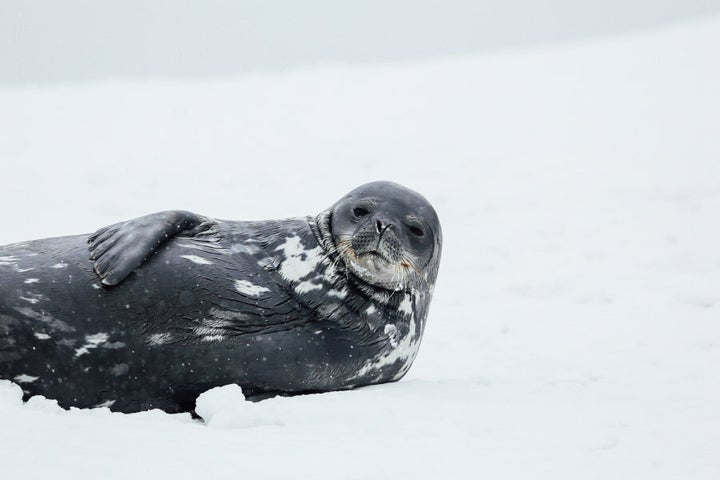
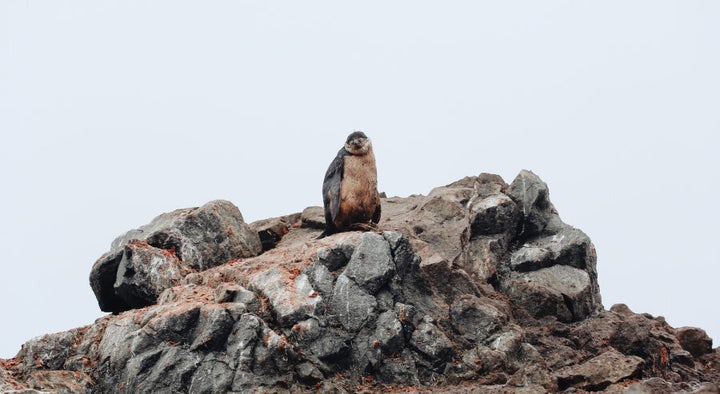
It was there in the Antarctic Southern Ocean that I spotted my first orca; a free and wild monstrous bull with a dorsal fin seen clearly from the furthest end of the 400ft vessel on which I lived. He travelled with his pod, leading females and babies across the bow and far off to the starboard side.
In the depths of the Antarctic waters, whales of all kinds pass through during their summer migration. Followed by whaling ships, spy-hopping fin whale, minke whale (or the lesser rorqual) and blue, beaked, right, sei and sperm whale lead the way for the iconic baleen humpback to cruise toward the Antarctic humpback whale nursery, where pregnant mothers birth their clever young in the summer seas.
Beside the towering icebergs and flows, transient orca feed on colossal squid and sleeping fur seals, while the breeding southern rockhopper penguin (famous for its distinctive feathers around the eyes) live amongst the king, chinstrap and gentoo penguins of the subantarctic waters.
Most species, endemic and passer-by, are part of an elaborate and naturally maintained ecosystem, relying on the autotrophic phytoplankton and krill to build upon the intricate food chain of the Antarctic pelagic environment.
Remote and protected, the Antarctic continent is one of the last natural wonders untouched by human impact and intervention. The Antarctic Treaty System protects the flora and fauna spawning the 14,000,000 square kilometre ice field, and in partnership with the Census of Marine Life (CoML), resident researchers churn out new and bountiful non-lethal findings about Antarctic ecology from several bases, such as Mawson's Station.
In 1998, the Protocol on Environmental Protection to the Antarctic Treaty (or the Madrid Protocol) became the fundamental instrument to conserve and protect Antarctic biodiversity. The 1979 Antarctic Conservation Act enforced restrictions on the introduction of alien plants or animals, as well as on the overfishing of krill.
But it's not enough.
In Antarctica, unregulated taking of whales and fish, such as the Patagonian toothfish and minke whale, remain a serious biological problem. Commercial whaling in Antarctica is unregulated and operated under a guise of scientific research. Whalers aboard factory ships target whales who migrate during the austral summer, harpooning mostly minke, but also fin, sei and humpback whales protected in 1982 by the International Whaling Commission's moratorium. The females killed are often pregnant.
Climate change has also reached the glacial environment. As Antarctica warms, parts of the Antarctic Peninsula have begun to shrink. In 2009, researcher Eric Steig noted that West Antarctica had warmed by more than 0.1°C per decade in the last 50 years. As a mixture of carbon dioxide emissions and inflow of warmer water from the deep ocean contribute to the melting of the continent and the continental shelf, you can feel and see the effects of unusual warmth down South.
The last discovered continent and my second home, Antarctica, is a mysterious and expansive biological mecca. The protection of the remote, hostile and intriguing environment is vital for the conservation of the Earth's climate and ocean systems. Frozen within the thick ice are the secrets to the word's climate history, and along its coast and seas are the planet's most iconic and keystone wildlife species. Though remote, human beings rely upon a healthy Antarctica for its resources and its biological information. It's protection through our stewardship is our human responsibility.
_________________________________
Special acnkowledgement to photographer John Bozinov for his supplied images of Antarctica used here with permission.
ALSO ON HUFFPOST AUSTRALIA